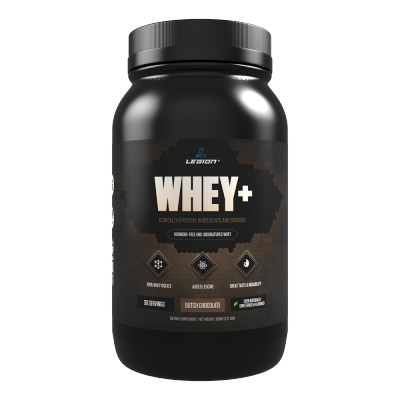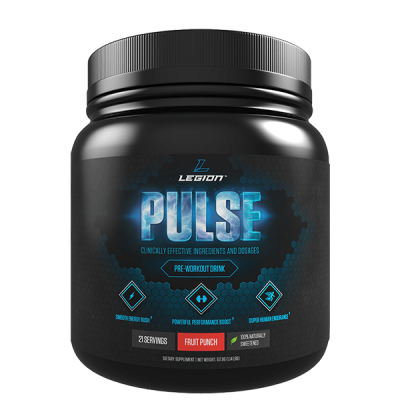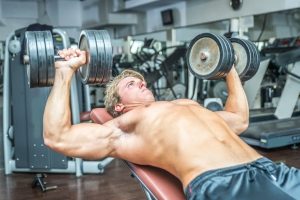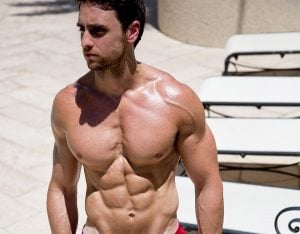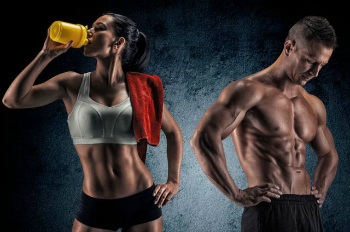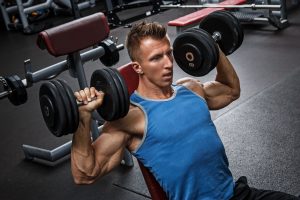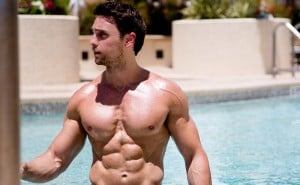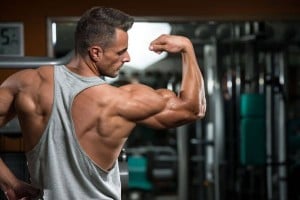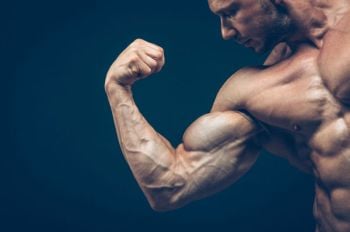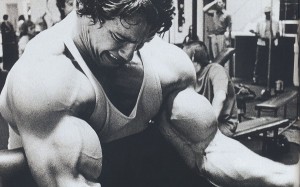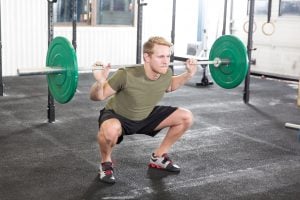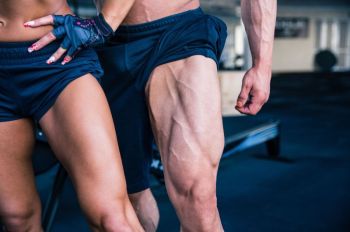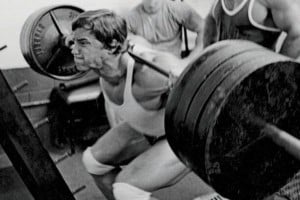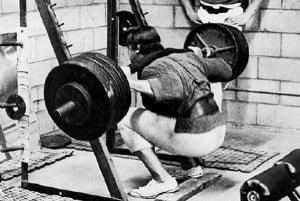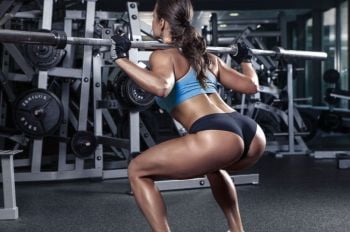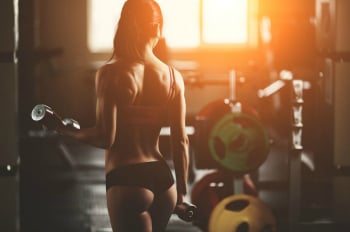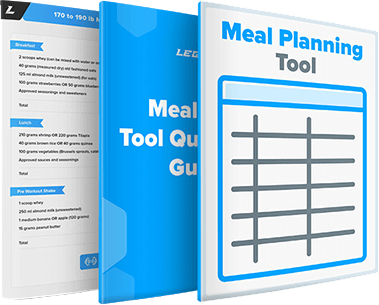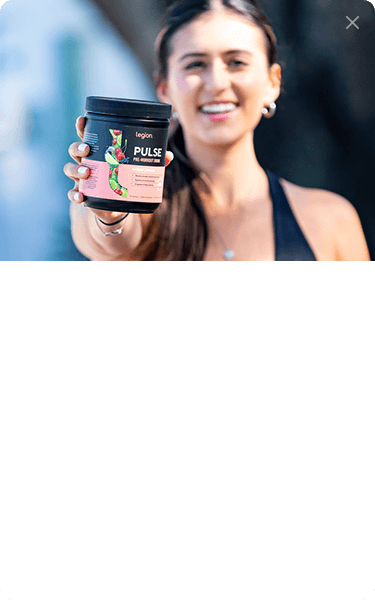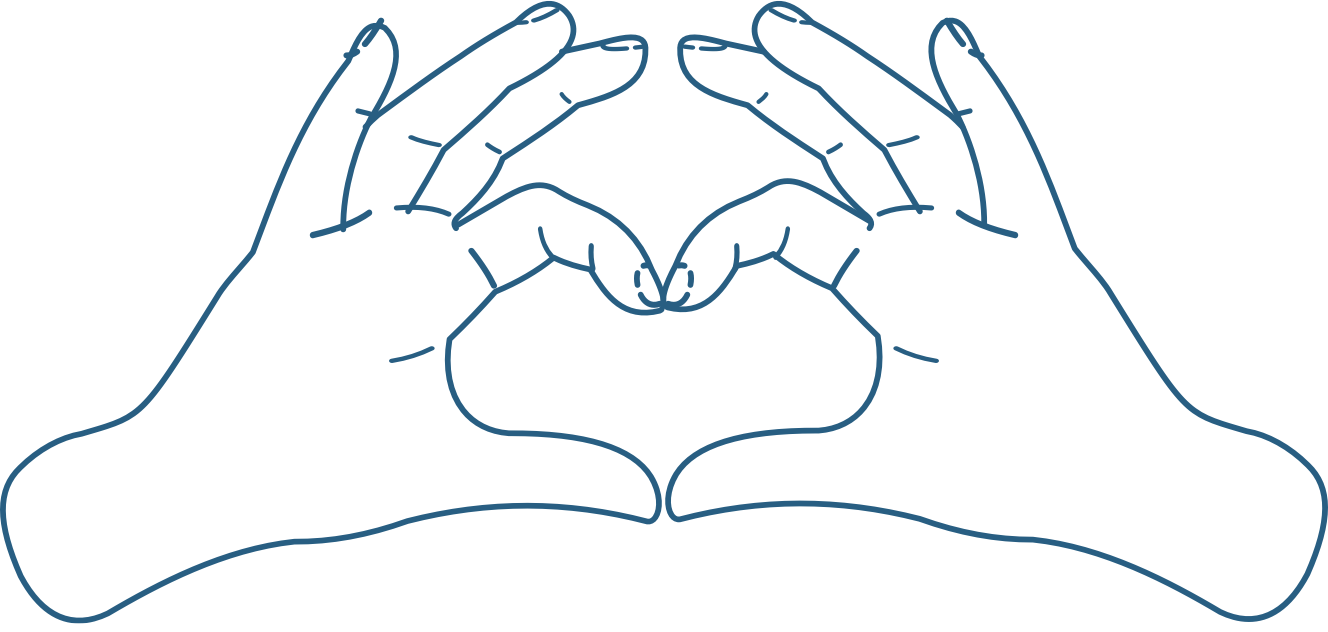Key Takeaways
- The three rules for proper arm training are: 1. Include exercises for the arms in your workout routine. 2. Focus on lifting heavy weights. 3. Emphasize progressive overload.
- The best arm exercises are those that allow you to safely move heavy loads and most improve your strength.
- If you’re an intermediate+ weightlifter and you want to get the most out of your arm training, work in multiple rep ranges and with weights ranging from 70 to 90% of your 1RM.
If you’re a guy, chances are you got into weightlifting first and foremost to get big arms and pecs.
Hey, no judgment here. I’m right there with you. 🙂
I still remember when I first watched The Predator and . . .

. . . yeah, that’s pretty awesome.
If you’re a gal, then you probably care more about your butt than your biceps. The fact that you’re here, though, tells me you’ve realized even a perfect lower body doesn’t make for the whole package. For that, you need some muscle definition up top as well.
Either way, you’ve come to the right place because in this article, you’re going to get simple, science-based answers to your most burning questions about how to build great arms.
For example, some people say the key to getting big arms is getting really strong on compound movements like the bench press, deadlift, and overhead press. Are they right?
Others say that’s all well and good but you’ll never have great guns unless you also train them directly with staples like curls, extensions, and the like. Is that true?
The most pessimistic out there say that the “secret” to impressive arms is mostly genetics, and if you don’t have the genes, you’re kinda SOL. What’s the story here?
Well, by the end of this article, you’re going to understand all this and more. You’re going to learn about the most important aspects of arm training and how to build effective arm workouts, and you’re also going to get a ready-made arm workout routine that you can put into immediate use in the gym.
A lot of what you’re going to learn in this article is based on the science of muscle building, but it’s also informed by my personal experience.
Here’s a shot of me from the good ol’ days of egg cream sodas and hitting jukeboxes to make them play music, after about 1.5 years of curl monkeying around:

Not awful, but nothing to post to the Gram about.
I did more of the same (bodybuilding magazine workouts, mainly) for the next several years, which got me here:

Better, but not exactly what you’d expect from ~7 years of regular weightlifting.
Well, I got serious about improving my body composition after taking that picture, which included following the advice I’m going to share with you in this article, and here’s where I am today:
Neeaaaat.
Better yet, I did it without stellar genetics, living in the gym, doing grueling workouts that I hated, or taking steroids, and that means you can do it too.
You can’t necessarily copy and paste my arms on your body, but if you follow the advice I’m going to share in this article and do the workouts, your arms will grow bigger and stronger.
The Arm Muscles
The arm muscles include three major muscle groups:
- The biceps
- The triceps
- The forearms
Out of the three, the biceps get most of the attention. When most people think of arm development, their mind’s eye conjures up bulging biceps. Big biceps means big arms, right?
Not necessarily.
Ironically, the biceps contribute substantially less to overall arm size than the triceps, which are a much larger muscle group. For most people, well-developed triceps will account for anywhere from 50 to 70% of their overall arm size.
A great example of this is Frank Zane, who was known for having one of the most proportionate physiques (and arms) of all time:
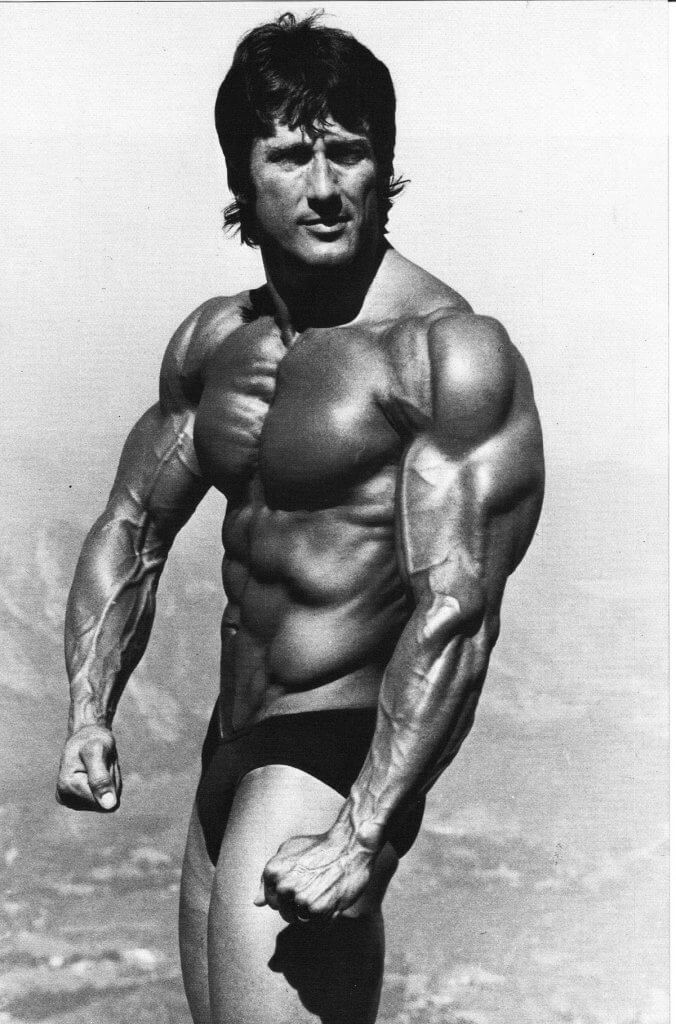
Thus, one of the little-known “secrets” to building big arms is building big triceps.
I’m getting ahead of myself though. We’ll talk arm training in a minute, but first, let’s take a closer look at each of the major muscle groups we’re going to be training.
The Biceps in Detail
The biceps (or, formally, biceps brachii) is a two-headed muscle that looks like this:
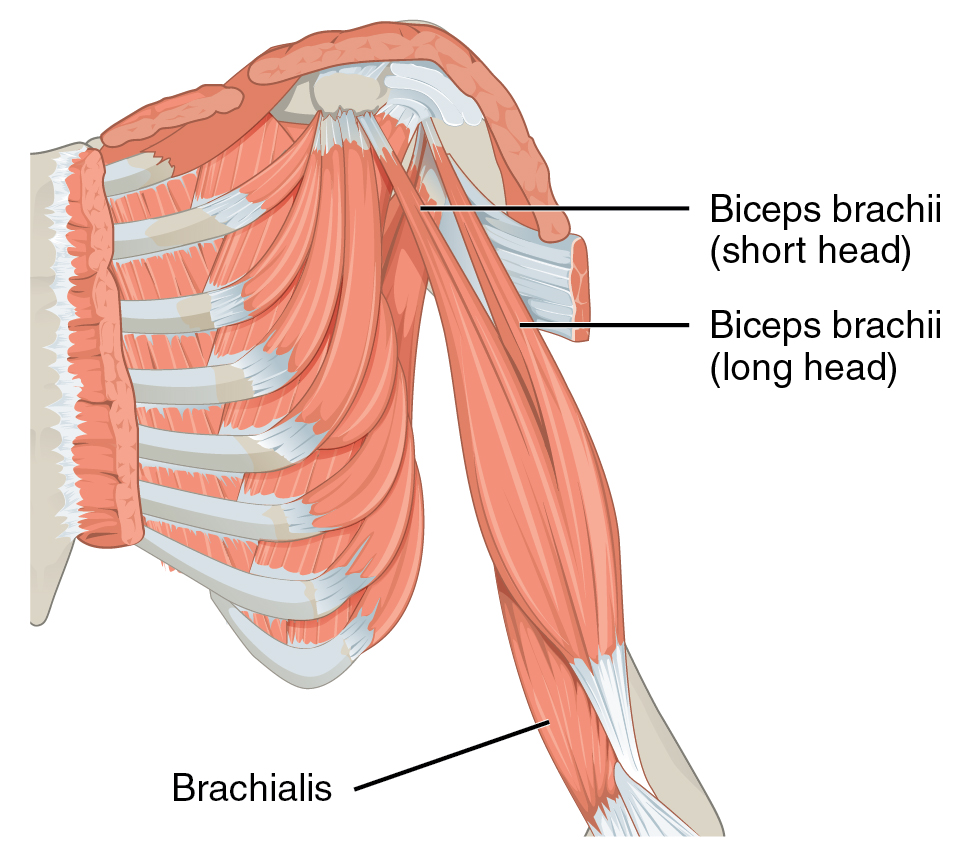
Another muscle you need to know about is the biceps brachialis, which lies beneath the biceps brachii and assists it in flexing at the elbow.
Here’s how it looks:
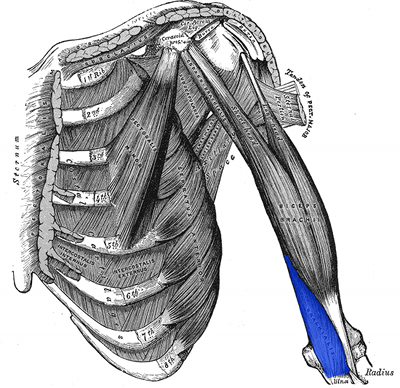
While this muscle isn’t nearly as prominent as the biceps brachii, it plays an important role in the overall appearance of your arms.
When well developed, the brachialis looks like a “knot” in between the biceps brachii and triceps, and it noticeably impacts the overall aesthetics of the arms.
First, it cleanly separates the biceps and triceps when flexed, which better showcases each.
Second, it pushes the biceps brachii up, giving you a better “peak” when flexing.
Here’s a picture of me that I think illustrates my point:
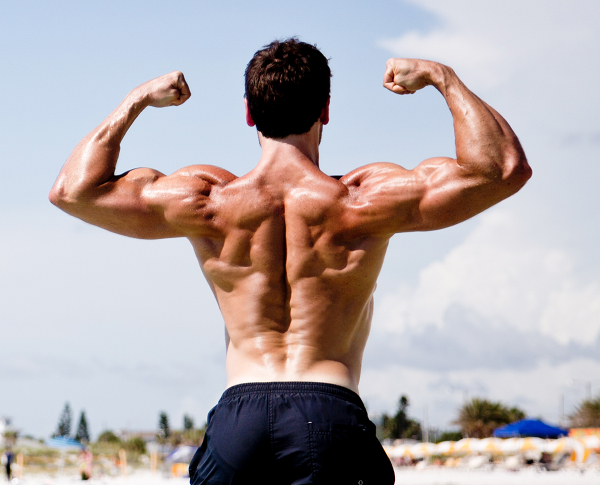
So, when we get to the exercises and workouts portion of this article, you’ll be including some work to target the brachialis.
The Triceps in Detail
The next muscle group to talk about is the triceps, or triceps brachii, which has three heads:
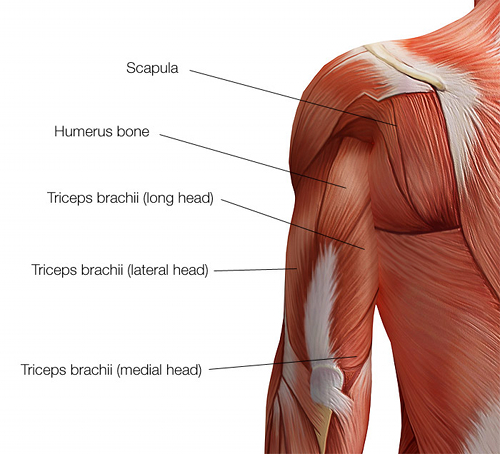
As you can see, the three heads combine to form the distinctive “horseshoe” that can become quite pronounced when properly developed.
Here’s another shot of me showing where I’m at with my triceps:
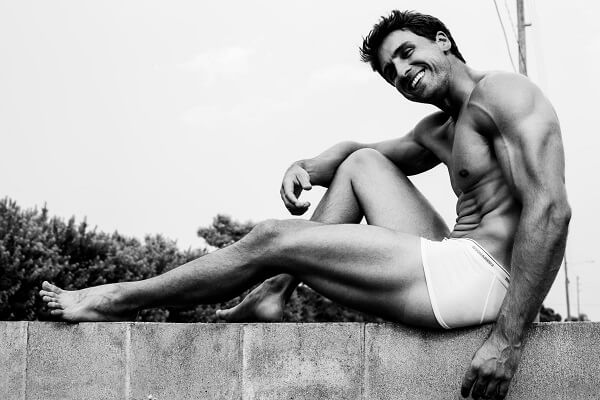
As I mentioned earlier, the biceps are given far too much focus in most people’s arm workouts.
Small triceps mean small, disproportionate arms, regardless of the size of the biceps.
The Forearms in Detail
Last but not least are the forearms, which are comprised of several smaller muscles:

Forearms are like the calves of the arms.
They aren’t the immediate focus, but if they’re underdeveloped, it’s sorely obvious. If they’re well developed, however, it greatly enhances the whole appearance of the limbs.
Well, I’ve been practicing what I preach in this article for several years now and my forearms have made quite a bit of progress, which I think you can see nicely here:
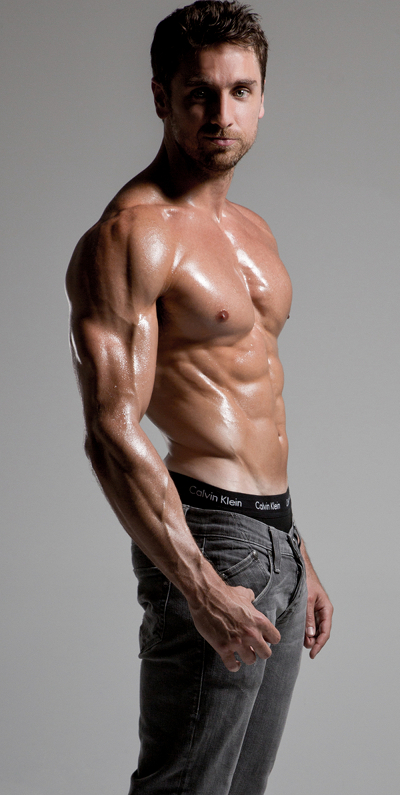
Alright then. Those are the muscles we want to develop and why.
Let’s now discuss how to best do it, starting with the fundamentals of proper arm training.
The 3 Most Important Rules of Arm Training
Ask people what you should do for your arm workouts, and they’ll probably tell you one of two things:
- You should do a bunch of pulling and pressing and your arms will take care of themselves.
- You should do a bunch of isolation exercises for your arms and focus on lighter weights and higher reps to really “feel the burn.”
Well, the first approach does work for some people, but only those whose arms are genetically predisposed to greatness. For most of us, a strong bench press, overhead press, deadlift, and barbell row just isn’t enough.
The second approach can also work, and as far as arm development goes, is generally superior to the first. That said, it’s not optimal because, as you’ll soon learn, there’s simply a better way to build bigger biceps and triceps.
That better way can be summarized like this:
- Include exercises for the arms in your workout routine.
- Focus on lifting heavier weights.
- Emphasize progressive overload.
Let’s look at each.
Arm Training Rule #1
Include Exercises for the Arms in Your Workout Routine
Many people say you don’t have to directly train your arms if you’re doing a lot of compound exercises like the bench press, overhead press, and deadlift.
Well, I’ve worked with thousands of men and women of all ages and circumstances, and I can confidently say that’s rarely the case.
Yes, heavy pushing and pulling is going to help develop your arms, but for most of us, it just isn’t enough to get the amount of muscularity we really want.
For most of us, it’s going to require that we include exercises in our workout routines specifically for the biceps and triceps, and potentially even the forearms as well.
This is why my programs for men and women include a combination of compound exercises that heavily involve the arms as well as isolation exercises that target them.
Arm Training Rule #2
Focus on Lifting Heavier Weights
I used to think that heavy, lower-rep lifting was for building strength, not gaining size, and that this was especially true for the arms, which generally responded best to “pump training,” not strength training.
Well, I was wrong.
One of the most important lessons I’ve learned in the last decade of researching, training, and coaching is this:
As a natural weightlifter, your number one long-term goal should be increasing your whole-body strength.
So long as you make that your primary focus in your training, you’ll have no trouble gaining the size you want.
The reason for this is while you can gain a fair amount of muscle in the beginning without gaining much strength, once you graduate to an intermediate lifter, strength and size become closely correlated.
In other words, once your “honeymoon phase” is over and your body is no longer hyper-responsive to resistance training, you’re going to have to get a lot stronger if you want to continue getting bigger.
How do you best do that?
Well, while exercise science is complex and there are many more questions than answers, the evidence is clear on this one: Heavy resistance training is the most effective way to get stronger.
And that’s why us natural weightlifters need to do a lot of heavy weightlifting if we want to gain significant amounts of muscle and strength.
This isn’t a special rule just for the arms, either. It applies equally to every major muscle group in the body. It’s true for the smaller, more stubborn ones like the biceps, triceps, and shoulders, as well as the bigger, more responsive ones like the legs, chest, and back.
Therefore, if you want to get big, defined, or even just “toned” arms as quickly as possible, then you want to get strong arms as quickly as possible, and that means doing a lot of heavy arm training.
And by “heavy,” I mean working primarily with weights in the range of 75 to 85% of your one-rep max (1RM), or in the range of 8 to 10 (75%) to 4 to 6 (85%) reps.
If you’re new to proper weightlifting (less than one year of training under your belt), you could focus exclusively on the 4-to-6 rep range and do fantastically.
Once you’re an intermediate weightlifter, though, you can benefit from adding some higher-rep work into your routines. (There are several reasons for this, but they go a bit beyond the scope of this article. If you want to dive into the physiology, though, check out this article to learn more.)
“But wait a minute,” you might be thinking. “[SHREDDED FITNESS MODEL] does a billion reps in his arm workouts and has Donkey Kong arms . . . What gives?”
Unfortunately, steroid use is rampant in this space, and especially among fitness competitors, models, and social media influencers, and these drugs change everything.
With the right drugs, you can just sit in the gym for a few hours every day doing set after set, exercise after exercise, and your muscles will just get bigger and bigger. (A bit of reductive, I know, but more accurate than inaccurate.)
For example, one study published in the New England Journal of Medicine gave a relatively small dosage of testosterone (600 mg per week) to one group of weightlifters and a placebo to another group for 10 weeks.
In the end, the natty group gained 4.4 pounds of muscle and added 22 pounds to their bench, which is good progress for intermediate lifters.
The roiderz, however, gained a whopping 13.4 pounds of muscle and added 50 pounds to their bench and eight times as much size in their triceps. In 10 freaking weeks. That borders on witchcraft.
Don’t worry, though.
You don’t need drugs to earn your tickets to the gun show. You just need a bit of know-how, hard work, and patience.
Arm Training Rule #3
Emphasize Progressive Overload
As you now know, if you stop getting stronger, you’ll eventually stop getting bigger.
That’s why you must make progressive overload the key focus of your training.
In simple terms, progressive overload is the progressive increasing of tension levels in the muscle fibers over time, and research shows it’s the most effective way to stimulate muscle growth.
Therefore, you can do all of the drop sets, supersets, eccentric sets, and other fancy training techniques you want, but if you don’t get progressive overload right, you’re always going to struggle to gain muscle effectively.
How do you get it right?
Simple: you gradually increase the amount of weight you’re lifting over time. In other words, you get stronger.
So long as you do this—so long as the weights you’re lifting gradually go up over time—you’ll continue gaining muscle and size (albeit slower and slower as you approach your genetic potential).
The 9 Best Arm Exercises
Now that you have some basic theory under your belt, let’s talk arm exercises.
Out of all the arm exercises you can do, you really only need to focus on progressing on a handful to get to where you want to be.
The reason for this is some arm exercises are better suited to our goals than others because they allow us to safely move heavy loads and most increase our strength, and these should be the primary focus of our arm workouts.
These exercises are, unsurprisingly, mostly compound movements.
Let’s take a look at each.
Barbell Curl
The barbell curl has been a bodybuilding staple for over a century now for good reason: it’s one of the best all-around biceps builders you can do.
Here’s how to do it correctly:
E-Z Bar Biceps Curl
The E-Z Bar curl is similar to the standard barbell curl, except that it allows you to grip the bar with a more neutral wrist position.
Some say it doesn’t activate the biceps as much as the standard barbell curl, but the benefit is that it targets the brachialis more and also takes a bit of stress off of your wrists and elbows.
I like to switch to the E-Z bar variant every few weeks or so to avoid minor repetitive strain aggravations.
Here’s how to do it:
Alternating Dumbbell Curl
Like the barbell curl, this is a time-proven exercise that builds bigger biceps.
I like it because it forces each arm to work independently, which helps prevent muscle imbalances resulting from one arm getting worked more than the other (which can easily happen with barbell curling).
Here’s how it works:
Dumbbell Hammer Curl
The hammer curl is particularly useful for building up the biceps brachialis (the smaller muscle that helps give your peak a slight boost).
Here’s how it works:
Chin-Up
The chin-up is generally considered a back exercise, which it is, but it also qualifies as a biceps exercise because of how involved they are.
You can add weight by squeezing a dumbbell in between your legs or with a dip belt or weighted vest as you get stronger, which ensures you can keep progressively overloading your muscles.
Close-Grip Bench Press
If I were to do just one triceps exercise, it would probably be the close-grip bench press.
This is a compound movement that heavily involves the triceps, allows you to safely push heavy weights, and also helps you get some extra volume in on your chest.
Here’s how to do it:
When doing a close-grip bench press, your grip should be slightly narrower than shoulder-width and no closer.
You’ll see many guys place their hands just a few inches apart, and this is a bad idea—it puts the shoulders and wrists in a weakened, compromised position.
Dumbbell Overhead Triceps Press
This is one of my favorite triceps exercises because it enables you to safely press heavy weight and overload the triceps.
Here’s how to do it:
Triceps Pushdown
This is the most common triceps exercise that people do and, surprisingly, it’s quite good.
That said, I like to save it for later in my workouts after I’ve done heavier work on the other exercises given in this list.
I also like the V-bar and straight bar attachments more than the rope because they feel more stable.
Here’s how to do it:
Dip
There are two types of dips you can do: the bench and upright dip.
Both are good for training the triceps and benefit the chest and shoulders as well, but I prefer the upright dip because it’s more difficult (and easier to add weight to for the purposes of progressive overload).
Here’s the bench dip:
And here’s the upright dip:
Forearm Training
I’m often asked what I do for my forearms, and people are surprised to learn that I do no direct forearm training. All development has been a result of heavy back, chest, and arm work.
I’m not a fan of directly training forearms for two reasons:
- It can lead to elbow tightness and pain, which can get in the way of your upper body workouts.
- It’s just not necessary if you’re doing enough heavy, compound lifting for your back, chest, and arms.
That said, if you really want to train your forearms, or if you need to develop a stronger grip for your pulling, then you can find an effective routine here.
The Hypertrophy-Power-Strength Arm Workouts
In this arm workout routine, you’re going to train arms twice per week, and you’re going to rotate through three different kinds of workouts (in the following order):
1. Arm Hypertrophy Workout
In these workouts, you’ll work in the 8-to-10 rep range (~75% of 1RM) for all exercises.
2. Arm Power Workout
In these workouts, you’ll work in the 2-to-3 rep range (~90% of 1RM) for your first exercise, and the 4-to-6 range (85% of 1RM) for the rest.
3. Arm Strength Workout
In these workouts, you’ll work in the 4-to-6 rep range for all exercises.
So, for example, in your first week, you’ll do the Hypertrophy and Power workouts; in the second week, you’ll do the Strength and Hypertrophy workouts; and in the third week, you’ll do the Power and Strength workouts, and so forth.
Don’t let the names of these workouts throw you off, by the way. All three will stimulate hypertrophy (muscle growth), power, and strength, but will emphasize each accordingly.
Here are the workouts:
Arm Hypertrophy Workout
Close-Grip Bench Press
Warm up and 3 sets of . . .
8 to 10 reps
Barbell or E-Z Bar Curl
Warm up and 3 sets of . . .
8 to 10 reps (~75% of 1RM)
Triceps Pushdown
3 sets of . . .
8 to 10 reps
Dumbbell Hammer Curl
3 sets of . . .
8 to 10 reps
Arm Power Workout
Close-Grip Bench Press
Warm up and 2 sets of . . .
2 to 3 reps (~90% of 1RM)
Barbell or E-Z Bar Curl
Warm up and 2 sets of . . .
2 to 3 reps
Dumbbell Overhead Triceps Press
3 sets of . . .
4 to 6 reps (~85% of 1RM)
Alternating Dumbbell Curl
3 sets of . . .
4 to 6 reps
Arm Strength Workout
Close-Grip Bench Press
Warm up and 3 sets of . . .
4 to 6 reps (~85% of 1RM)
Barbell Or E-Z Bar Curl
Warm up and 3 sets of . . .
4 to 6 reps
Dips
3 sets of . . .
4 to 6 reps
Dumbbell Hammer Curl
3 sets of . . .
4 to 6 reps
And last, a few odds and ends on how to do these workouts:
Once you hit the top of your rep range for one set, move up in weight.
This is how you ensure that you’re progressively overloading your muscles.
For instance, if you’re doing the Strength workout and get 6 reps with 135 pounds on your close-grip bench, add 5 pounds to each side of the bar for your next set.
If, on the next set, you can get at least 4 reps with 145 pounds, that’s the new weight you work with until you can close-grip bench it for 6 reps, move up, and so forth.
If you get 3 or fewer reps, though, reduce the weight added by 5 pounds (140 pounds) and see how the next set goes. If you still get 3 or fewer, reduce the weight to the original 6-rep load and work with that until you can do two 6-rep sets with it, and then increase.
Rest 4 minutes in between your 2-to-3-rep sets, 3 minutes in between your 4-to-6-rep sets, and 2 minutes in between your 8-to-10-rep sets.
Yes, this is going to feel like a lot of standing around, but resting properly is a hugely important part of heavy weightlifting.
This is the time where your muscles recoup their strength so you can give maximum effort each set.
Make sure you’re eating enough food.
You probably know that you’re supposed to eat a fair amount of protein to build muscle, but total caloric intake also plays a major role as well.
Read this article to learn more.
The Hypertrophy-Power-Strength Arm Workout Routine
This arm workout routine is simple but effective.
For 12 weeks, I want you to do two of these workouts per week and put 2 to 3 days of rest in between each. I also want you to move through them in the order of Hypertrophy, Power, and Strength. Thus, you’ll do each workout a total of 8 times over the course of 3 months.
I also want you to deload as needed (read this article to learn more).
Here’s how this will look:
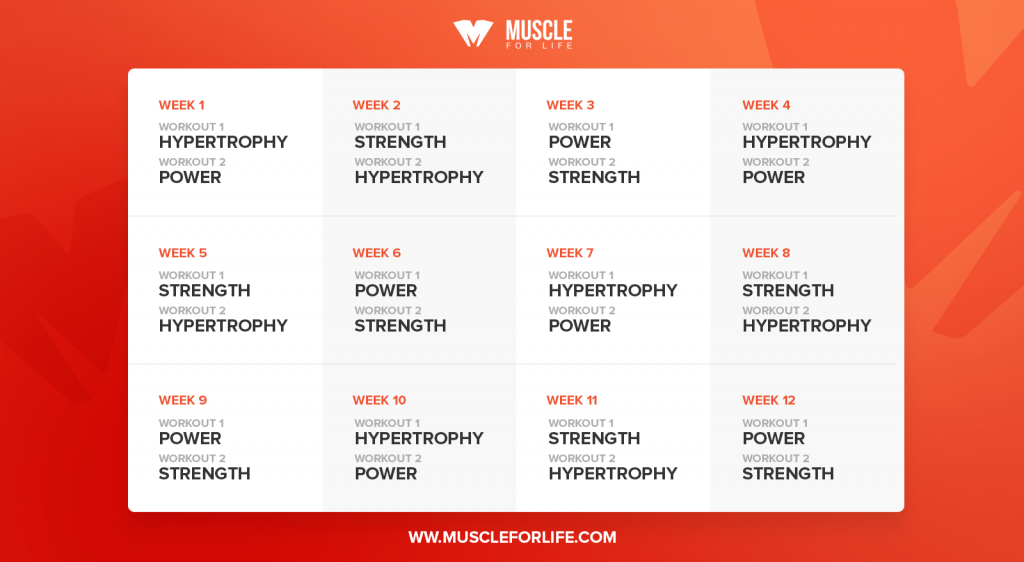
Once you’ve completed this 12-week training block (mesocycle), you have two options:
- You can keep following the routine if you’re seeing good gains.
- You can change it up for the next 12 weeks, doing two Hypertrophy workouts per week for 4 weeks, followed by two Power workouts per week for 4 weeks, followed by two Strength workouts per week for 4 weeks.
The first option is straightforward—you just keep plugging along.
If you want to go through the second option, though, here’s what that would look like:
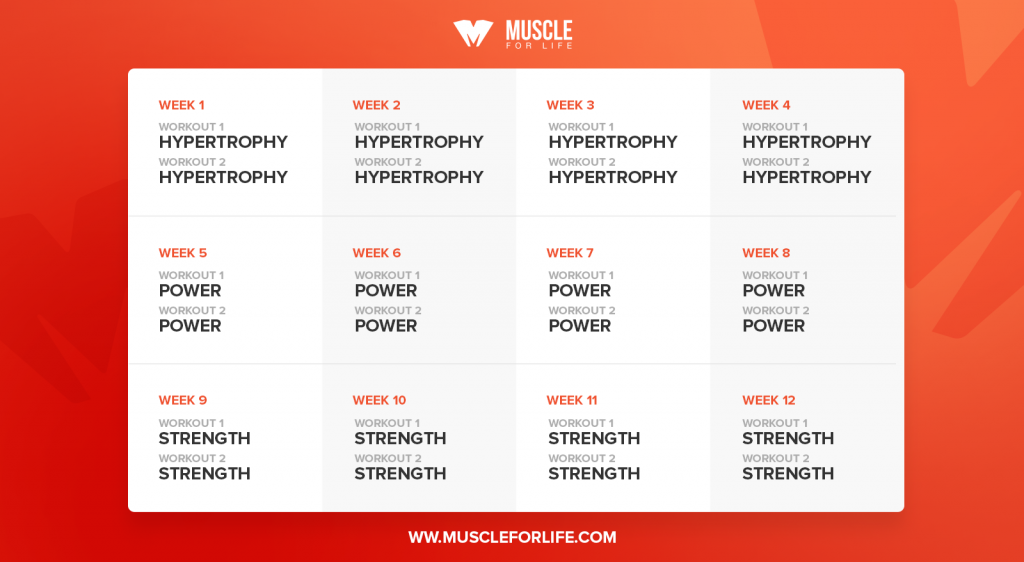
And in terms of fitting these workouts into your larger workout routine, here are a few pointers:
- Put at least one day in between these workouts (two is optimal).
- If you want to maximize arm development, train your arms on your first training day of the week, when you’re freshest (and before you fatigue your arms with other upper body training).
- If you’re rotating between the 3 workouts and miss 1 week for whatever reason, don’t skip the workout you missed— just do it the following week and carry on.
What About Supplements?
I saved this part for last because it’s the least important.
The truth is most supplements for building muscle and losing fat are worthless.
Unfortunately, no amount of pills and powders are going to make you muscular and lean.
That said, if you know how to drive muscle growth with proper dieting and exercise, certain supplements can accelerate the process.
Here are the ones I use and recommend:
ATLAS Mass Gainer
In an ideal world, we’d get all of our daily calories from carefully prepared, nutritionally balanced meals, and we’d have the time to sit down, slow down, and savor each and every bite.
In the real world, though, we’re usually rushing from one obligation to another and often forget to eat anything, let alone the optimal foods for building muscle, losing fat, and staying healthy.
That’s why meal replacement and “weight gainer” supplements and protein bars and snacks are more popular than ever.
Unfortunately, most contain low-quality protein powders and large amounts of simple sugars and unnecessary junk.
That’s why I created ATLAS.
It’s a delicious “weight gainer” (meal replacement) supplement that provides you with 38 grams of high-quality protein per serving, along with 51 grams of nutritious, food-based carbohydrates, and just 6 grams of natural fats, as well as 26 micronutrients, enzymes, and probiotics that help you feel and perform your best.
ATLAS is also 100% naturally sweetened and flavored as well, and contains no chemical dyes, cheap fillers, or other unnecessary junk.
So, if you want to build muscle and lose fat as quickly as possible and improve the nutritional quality of your diet, then you want to try ATLAS today.
RECHARGE Post-Workout Supplement

RECHARGE is a 100% natural post-workout supplement that helps you gain muscle and strength faster, and recover better from your workouts.
Once it’s had time to accumulate in your muscles (about a week of use), the first thing you’re going to notice is increased strength and anaerobic endurance, less muscle soreness, and faster post workout muscle recovery.
And the harder you can train in your workouts and the faster you can recover from them, the more muscle and strength you’re going to build over time.
Furthermore, RECHARGE doesn’t need to be cycled, which means it’s safe for long-term use, and its effects don’t diminish over time.
It’s also naturally sweetened and flavored and contains no artificial food dyes, fillers, or other unnecessary junk.
So, if you want to be able to push harder in the gym, train more frequently, and get more out of your workouts, then you want to try RECHARGE today.
WHEY+ Protein Powder
Whey protein powder is a staple in most athletes’ diets for good reason.
It’s digested quickly, it’s absorbed well, it has a fantastic amino acid profile, and it’s easy on the taste buds.
Not all whey proteins are created equal, though.
Whey concentrate protein powder, for example, can be as low as 30% protein by weight, and can also contain a considerable amount of fat and carbs.
And the more fat and carbs you’re drinking, the less you can actually enjoy in your food.
Whey isolate protein powder, on the other hand, is the purest whey protein you can buy. It’s 90%+ protein by weight and has almost no fat or carbs.
Another benefit of whey isolate is it contains no lactose, which means better digestibility and fewer upset stomachs.
Well, WHEY+ is a 100% naturally sweetened and flavored whey isolate protein powder made from exceptionally high-quality milk from small dairy farms in Ireland.
It contains no GMOs, hormones, antibiotics, artificial food dyes, fillers, or other unnecessary junk, and it tastes delicious and mixes great.
So, if you want a clean, all-natural, and great tasting whey protein supplement that’s low in calories, carbs, and fat, then you want to try WHEY+ today.
PULSE Pre-Workout
Is your pre-workout simply not working anymore?
Are you sick and tired of pre-workout drinks that make you sick and tired?
Have you had enough of upset stomachs, jitters, nausea, and the dreaded post-workout crash?
Do you wish your pre-workout supplement gave you sustained energy and more focus and motivation to train? Do you wish it gave you noticeably better workouts and helped you hit PRs?
If you’re nodding your head, then you’re going to love PULSE.
It increases energy, improves mood, sharpens mental focus, increases strength and endurance, and reduces fatigue…without unwanted side effects or the dreaded post-workout crash.
It’s also naturally sweetened and flavored and contains no artificial food dyes, fillers, or other unnecessary junk.
Lastly, it contains no proprietary blends and each serving delivers nearly 20 grams of active ingredients scientifically proven to improve performance.
So, if you want to feel focused, tireless, and powerful in your workouts…and if you want to say goodbye to the pre-workout jitters, upset stomachs, and crashes for good…then you want to try PULSE today.
The Bottom Line on the Best Arm Workouts
Getting great arms doesn’t require overly complex workout plans, endless hours in the gym, or drugs.
So long as you do plenty of heavy weightlifting, build your arm strength over time, and do a variety of exercises that emphasize the biceps, triceps, and, if necessary, the forearms, you’ll do fantastically.
And that’s exactly what this arm workout routine will do for you.
You’ll also want to make sure you eat enough food and get enough sleep, and if you want an extra boost, take the right supplements, too.
Do all of that, and I promise you’ll be happy with the results.
Want More Workouts?
Chest Workouts
The Perfect Chest Workout Routine for More Hypertrophy, Power, and Strength
How to Get a Bigger and Stronger Chest in Just 30 Days
The Ultimate Chest Workout
This Is The Last Upper Body Workout You’ll Ever Need
Shoulder Workouts
This Is the Perfect Shoulder Workout Routine for Big and Strong Delts
How to Get Bigger and Stronger Shoulders in Just 30 Days
The Ultimate Shoulder Workout
4 Rotator Cuff Exercises That You Should Be Doing (and Why)
Arm Workouts
How to Get Bigger and Stronger Biceps in Just 30 Days
How to Get Bigger and Stronger Triceps in Just 30 Days
The Ultimate Arms Workout
Back Workouts
The Perfect Back Workout Routine for More Hypertrophy, Power, and Strength
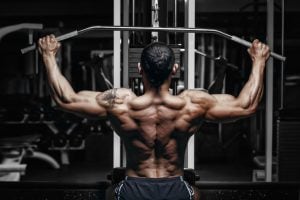
How to Get a Bigger and Stronger Back in Just 30 Days
The Ultimate Back Workout
Leg Workouts
3 Science-Backed Leg Workouts for More Hypertrophy, Power, and Strength
How to Get Bigger and Stronger Legs in Just 30 Days
This Is The Last Lower Body Workout You’ll Ever Need
The Ultimate Legs Workout
Butt Workouts
How to Get a Bigger and Rounder Butt in Just 30 Days
The Best Butt Exercises for Building Head-Turning Glutes
If you liked this article, please share it on Facebook, Twitter, or wherever you like to hang out online! 🙂
What’s your take on arm workouts? Have anything else to share? Let me know in the comments below!
Scientific References +
- Schoenfeld, B. J., Pope, Z. K., Benik, F. M., Hester, G. M., Sellers, J., Nooner, J. L., Schnaiter, J. A., Bond-Williams, K. E., Carter, A. S., Ross, C. L., Just, B. L., Henselmans, M., & Krieger, J. W. (2016). Longer interset rest periods enhance muscle strength and hypertrophy in resistance-trained men. Journal of Strength and Conditioning Research, 30(7), 1805–1812. https://doi.org/10.1519/JSC.0000000000001272
- Schoenfeld, B. J. (2010). The mechanisms of muscle hypertrophy and their application to resistance training. In Journal of Strength and Conditioning Research (Vol. 24, Issue 10, pp. 2857–2872). J Strength Cond Res. https://doi.org/10.1519/JSC.0b013e3181e840f3
- Bhasin, S., Storer, T. W., Berman, N., Callegari, C., Clevenger, B., Phillips, J., Bunnell, T. J., Tricker, R., Shirazi, A., & Casaburi, R. (1996). The Effects of Supraphysiologic Doses of Testosterone on Muscle Size and Strength in Normal Men. New England Journal of Medicine, 335(1), 1–7. https://doi.org/10.1056/NEJM199607043350101
- Bhasin, S., Woodhouse, L., Casaburi, R., Singh, A. B., Bhasin, D., Berman, N., Chen, X., Yarasheski, K. E., Magliano, L., Dzekov, C., Dzekov, J., Bross, R., Phillips, J., Sinha-Hikim, I., Shen, R., & Storer, T. W. (2001). Testosterone dose-response relationships in healthy young men. American Journal of Physiology - Endocrinology and Metabolism, 281(6 44-6). https://doi.org/10.1152/ajpendo.2001.281.6.e1172
- Schoenfeld, B. J., Grgic, J., Ogborn, D., & Krieger, J. W. (2017). Strength and hypertrophy adaptations between low- vs. High-load resistance training: A systematic review and meta-analysis. In Journal of Strength and Conditioning Research (Vol. 31, Issue 12, pp. 3508–3523). NSCA National Strength and Conditioning Association. https://doi.org/10.1519/JSC.0000000000002200

